Frequently listed on the “What to visit in Lisbon” it is arguably the most popular tourist attraction in Lisbon.
St. George’s Castle crowns a hilltop in the old part of Lisbon and offers a great view over the city and the River Tagus
Legend has it that in 1147, Martim Moniz, D Afonso Henriques faithful Captain, wedged himself in the castle door to prevent it from closing. This heroic act allowed his troops to enter and capture the castle from the Moors, in the name of the first king of Portugal
Get your Skip the Line Ticket with escort Here
Alfama is the city’s charismatic medieval neighbourhood
Alfama still bears the signs of the Moorish presence in Lisbon, with buildings very close to each other and quite irregular cobblestone streets.
It’s very picturesque and a great spot in which to wander around. Explore the maze of its medieval alleys and crumbling houses with colourful laundry drying on wrought-iron balconies.
Stop to peek into tiny shops and relax in terraces with amazing views. The perfect place for amazing photos
The city’s cathedral is also known as the Sé de Lisboa
It was founded in 1150, three years after D.Afonso Henriques conquered Lisbon from the Moors.
It stands upon the site of a former mosque and earlier Roman foundations. You may recognise it easily by its twin castellated bell towers, an architectural feature that lends the building an odd military character.
The National Pantheon is in the historic district of Santa Clara.
It is a beautiful and unique church that acts as Portugal’s National Pantheon and the final burial location for many illustrious Portuguese like Amália Rodrigues, the famous Fado singer.
Situated in the old city, it’s massive white dome is a prominent feature of the skyline of eastern Lisbon.
Curiosities about the National Pantheon
The National Pantheon is also known as the Church of Santa Engrácia, and from which expression “Works of Santa Engrácia” applied to something that never seems to end, will have originated given that the construction of the National Pantheon, as we know it nowadays, took 400 years to complete.
However, this expression is also associated with another tragic event known as the “Desacato de Santa Engrácia” (Disturbance at Santa Engracia).
Rumour has it that a young man was accused of stealing the reliquary from the Church. Although he pleaded not guilty, he never explained his presence there, that day. Condemned to death at the stake, he will have said in his last breath “it is as certain that I die innocent as the building works on the church will never end.”
Latter facts proved that he was innocent and the reason why he did not mention what he was doing there was to protect the good name of a certain nun
A second hand market
The Flea Market takes place in the Campo de Santa Clara, Alfama, every Tuesday and Saturday from 9:00 a.m. to 6:00 p.m.
It dates back to the XIII century, being, therefore, one of the oldest fairs of the city. A real treasure hunt with a panoply of items, from the original to the vintage, from which to choose.
This magnificent square, facing the river, is the beginning of Lisbon’s downtown.
It is also known as “Terreiro do Paço” meaning “Palace Grounds”, referring to its function before the Great Earthquake of 1755. It is a pleasant stroll along the river where you may relax and see the ferries crossing to and fro. At the end of the day, watch the sun setting on the river with a drink in hand.
Majestic and monumental this Arch symbolises Lisbon, reborn from the ashes after the 1775 earthquake.
Inside, visitors can learn about Lisbon’s history, from the Arch’s construction in 1755 until its completion in 1875.
At the top of the Arch, the three figures represent Glory crowning Genius and Valor.
Avoid the Crowd – Get your Ticket Here
Rossio is Lisbon’s main square.
The equivalent of Madrid’s Puerta del Sol or London’s Trafalgar Square, and a common meeting place for locals. In this Square, beside the monument of Pedro IV, there are two fountains, cobblestones in wave patterns, and some beautiful surrounding buildings, for instance, the Teatro Nacional Dona Maria II, from the 1840s.
Standing on Praça do Rossio, you will see a high tower that rises above the square, it is actually a lift – called Elevador de Santa Justa – and it connects the lower streets of downtown Lisbon with the higher Largo do Carmo. This structure built in 1882, by Raul de Ponsard, an apprentice of Eiffel.
The main attraction of the lift is the viewing platform on the top.
Chiado
Take a stroll along the historical streets of this shopping district, stopping for a cup of coffee at the Brasileira, with the statue of Fernando Pessoa, Portugal’s great Modernist poet.
Visit the Armazens do Chiado a department store that burned down, together with much of the neighbourhood, in 1988, and reopened in 1999.
Of great architectural simplicity, this church houses, in its interior, one of the world’s wealthiest chapels: São João Batista
It was designed in Rome using the most costly materials available, including ivory, agate, porphyry, lapis lazulli, gold and silver. It was then blessed by Pope Bento XIV and shipped in 3 vessels to Lisbon in 1747 to be rebuilt piece by piece.
Of note: the chapel’s “paintings,” which are not paintings but extraordinarily detailed mosaics, and the ceiling painted with scenes of the Apocalypse.
Today this chapel is considered a masterpiece of European art.
At the beginning of the 16th century, this land on the outskirts of the city, was where the victims of the black plague were buried.
When D. Manuel I, heard about the miracles of São Roque against the black plague, he requested, from Venice, a relic of this saint, to protect the Lisbon’s population.
The inhabitants of this city built a hermitage next to the cemetery, to house and venerate the relic. Later the Jesuits were allowed to build the S Roque Church on the condition that the relic should still be kept within
The Bairro Alto is Lisbon’s cultural and bohemian neighbourhood with a variety of national and international bars, restaurants and alternative shops that stay open until late at night. It also has some of the best viewpoints: S Pedro de Alcântara, a terraced garden overlooking the Castle. There you will find a tiled hand-painted map with Lisbon’s main attractions.
Miradouro de Santa Catarina, is further down, with Luís de Camões fearful Adamastor statue and a great view of the river. A perfect place to rest your feet for a while and have a fresh drink.
Look for the rooftop bars!
Although it was once only known for its antique shops, this attractive neighbourhood (named “Royal Prince” in honour of Queen Maria II’s firstborn) has become the most exciting shopping quarter, down one long street. There are galleries, independent boutiques and design shops for the city’s hippest crowds, as well as the most beautiful and appealing shopping gallery in a palace from the 1800s called Embaixada.
Belém Tower was built between 1514 and 1519, to defend Lisbon’s sea access.
It is a mix of a medieval tower and a defensive bulwark for the naval defence of Lisbon. Besides its military function, it is a reference to the reign of Rei D. Manuel I (1469-1521) displaying characteristic elements of Manueline’s architectural style, including the first Western stone representation of the first Indian’s animal brought to Europe, a rhinoceros.
The Jerónimos Monastery was commissioned by King Manuel I, shortly after Vasco da Gama had returned from his trip to India, and was mostly financed by the profits of the spice trade so you can see the scale of the wealth available to the Crown.
The Jerónimos Monastery is the epitome of the Manueline’s style, its construction started in 1501 and lasted about 100 years. The Monastery survived the earthquake of 1755, but the invading French troops sent by Napoleon Bonaparte heavily damaged it in the early nineteenth century.
On entry, there are the tombs of the poet Luís de Camões, author of the epic masterpiece Os Lusíadas. As well as the Portuguese navigator Vasco da Gama, commander of the armada that set sail for India in 1497, completing the first such naval voyage in history. You can also find in the lateral chapels and the chancel, tombs of Portuguese Kings during the Golden Age of the discoveries.
The Maritime Museum is west of the Jerónimos Monastery, should you have time for a visit.
Avoid the Crowd – Get your Ticket Here
This monument was commissioned by the regime of António de Oliveira Salazar for the Portuguese World Exhibition (1940).
It was built to commemorate the Portuguese discoveries and its heroes. It is a vessel shaped monument, 56m-high with a concrete limestone coated structure, in whose sides emerge sculpted figures of the great Portuguese discoverers. At the bow of the caravel-monument, you may find the figure of the Infante D. Henrique, holding a ship in his right hand; in the back, the queen Philippa of Lancaster responsible for a generation of maritime princes.
Don’t miss the world’s most extensive collection of coaches and royal vehicles.
With an assortment of state and promenade vehicles from the 16th to the 19th centuries, in large part from the Royal House of Portugal, to which vehicles from the Church’s estate and private collections were later added. The National Coach Museum presents an outstanding collection which allows visitors to understand the technical and artistic evolution of the animal-drawn transportation used by the Courts of Europe up until the emergence of motor vehicles.
The Ajuda National Palace is a splendid neoclassical jewel of Lisbon, located in the Belem district.
Although this palace was never completed as planned due to the exile of the royal family in Brazil caused by the French invasion of Portugal, it is still one of Europe’s most perfect romantic buildings. Nowadays the Palace is open to visitors, gathering important collections from the 15th to the 20th century, mainly of decorative arts, and is still used by the Portuguese State for official ceremonies.
Family Insights
The Royal Family escaped the devastating effects of the 1755 earthquake that completely destroyed their sumptuous residence in the Paço da Ribeira, by being, at the time, residing in their Country House in Belém. After this catastrophic event D. José I refused to ever stay in “stone and mortar” buildings opting to build his new residence, in wood, high up in the Alto da Ajuda: The Royal Paço da Ajuda, also known as “The Royal Shack”.
The Ajuda Palace served as Royal Residence for 3 decades, until a fire, during the reign of D Maria I, destroyed it completely and so the court moved to the Palace of Queluz.
The Minister of Public Works plans a new stone and lime palace to replace the Royal Shack. Building began in 1796, under the regency of Prince D. João. Several vicissitudes led to the interruptions of these works, namely the flight of the Court to Brazil, the Napoleonic invasions, the civil war between absolutists and liberalists and the consequent lack of funds
With the liberal victory, D Pedro assumed the regency, in the minority of his daughter D. Maria da Glória, future Queen D Maria II, but choose as his main residence the Palace of Necessidades, leaving the Ajuda Palace forlorn.
D Luís I rises to the throne and he prepares the Ajuda Palace to receive his bride. A year later in 1862, he married D. Maria Pia who brought with her wedding presents from Italy to decorate and embellish the Ajuda Palace. New spaces are created, old ones reformulated. Walls and ceilings are lined, plastered or repainted. The floor is wood-covered and carpeted, all to accompany the then modern standards of comfort and privacy. The Bourgeoisie of the 19th century sought more intimate and cosy spaces. Rooms were designed to host venues such as galas and banquets, meetings of the State Council, and other more sheltered ones, for family everyday life.
It was here in the Ajuda Palace that the Princes D Carlos (1863 – 1908) and D Afonso (1865-1920) were born.
This establishment is the traditional home of the delicious Pastel de Nata; a custard tart served sprinkled with cinnamon.
This sweet cake is believed to have been created during the 18th century by Catholic nuns based in the Jerónimos Monastery, which baked these sweets as a way of raising extra funds for the upkeep of the monastery. This chaotic cafe/bakery was the first to master the recipe from the convent and has been now selling Pasteis de Nata for over 150 years.
A former textile mill this historical industrial complex now houses an array of art retailers & unique restaurants, attracting countless visitors to re-discover this area of Alcântara.
The LX Factory is open all year round, and on Sundays, the stalls are set up for the much sought after trendy and vintage market
To get there from Belém catch the tram nº 15 to Calvário
Head to Bairro Alto, for stunning views of the city and partying in Lisbon’s most famous nightclub district. Just up the hill from Chiado, this is the place to go out in town. Tiny little streets which are empty in the daytime become crammed walkways which are difficult to get through.
Principe Real exudes a bohemian aura. With a varied offer from gay bars and bars full of style and tradition, here the night has a wide range of choices. Up in Príncipe Real is one of the Lisbon’s most celebrated watering holes, Pavilhão Chinês, where a bizarre collection of curious knick-knacks line the walls of this extraordinary establishment. For a refined night out, head over to Cinco Lounge, where surprising cocktails are mixed with skill and finesse.
Meaning Parque of Nation, where the Expo 98 was held, it is the most modern part of the city, with futuristic buildings and a great view over the river. Here you may find many trendy restaurants and bars with Portuguese and international cuisine, excellent drinks and cocktails. Some of these bars and restaurants are situated on top of magnificent buildings, with stunning views or terraces along the river.
A great success with the children is the Oceanário, Europe’s biggest aquarium
If you want to venture outside the city, taking the train to Cascais will take you from the river to the sea. Consider getting off in Monte Estoril station for a stroll along the beaches to Cascais (about 2.5km)
Cascais is a fisherman’s village that many Royal Families took up as their summer retreat. It kept its charm while gaining a cosmopolitan feel.
Great for a relaxed day out, stroll along the cobblestone streets, trendy boutiques and excellent restaurants, try the Santini icecreams, or visit many of the cultural spots such as Casa das Histórias and Museu Castro Guimarães.
You may also like to take a walk, or a bike ride outside the town to Boca do Inferno, (Devil´s mouth) a rock formation or further up the coast to Praia do Guincho, a large dune beach, great for surfing and windsurfing.
It is said that Estoril and it’s Casino during the second world war, in which Portugal was a neutral country, inspired Ian Fleming to create his 007 characters: James Bond
For more on Cascais, an unforgettable town, click here
Marvila was an old industrial neighbourhood that thrived in sugar, rubber and wine production. The fall of these industries led to a landscape of abandoned factories and warehouses.
Upcoming artist and designer started moving in impulsed by the (then) low rents and the riverfront views. In a prime location between Parque das Nações and Alfama, it is now quickly becoming the cultural hub of Lisbon. With art galleries, theatres and cultural complexes such as Braço da Prata.
The Lisbon Beer District with three craft breweries; trendy bars and restaurants, vintage shops, co-working areas and a parkour academy have also set up shop here
To get there, take the 728 bus from Cais do Sodre or pick up one of the many scattered bicycles throughout Lisbon. Pedal on for about 6km alongside the river.
The National Tile Museum is housed in the Madre de Deus Monastery in Xabregas, Lisbon
The Tile Museum presents a valuable collection that portrays the history and evolution of tiles and ceramics in Portugal, from the 16th century to the present day. It explains how the tile became part of the Portuguese decoration, what it depicts and the evolution of its design.
The Madre de Deus Monastery
The Madre de Deus Monastery dates from 1509 and was founded by the Queen D.Leonor (wife of D. João II), known as “The Perfect Queen”, a model of Christian virtues and founder of Misericordias (social institutes) and several hospitals. D. Leonor was an admirer of beauty and art and commissioned several ceramic objects, sculptures and paintings, some of which are part of this monastery.
The magnificent Madre de Deus Church was later built by D. João III, in 1550. Do not pass by the unimpressive door, in the cloister, and miss this luxurious church!
The Monastery was shaken by the 1755 earthquake and largely destroyed. However, still present to captivate and dazzle you are the church, choir, chapels of St. Anthony and Queen D. Leonor, and the Arabic chapel that is covered by one of the rare Mudejar ceilings.
In the museum, there is also a restaurant/cafeteria decorated with 19th-century tiles, removed from a Lisbon’s house kitchen.
Head to Cais do Sodré and catch a ferry to Cacilhas.
A small town on the south margin of the Tagus, offering incomparable views of Lisbon Visit the Fragata D Fernando e Glória and enjoy seafood and fresh fish in one of the many restaurants available. Walk along the Cais do Ginjal and let yourself be tempted for a refreshing drink in Ponto de Encontro ou Atira-te ao Rio. You’ll have the river at your feet, a perfect picture view of Lisbon and the Cristo Rei statue above
That is what you may call being truly blessed
What leaves the biggest impression on a trip is the moments shared and the experiences undertaken. Make sure to book one of Lisbon’s many activities
Things to do in Lisbon if visiting for the first time
It is always a good idea to sign up for a Lisbon tour during your stay for not only will it give you a better understanding of what you are visiting but will also context it historically.
Let’s face it, we may be able to identify all major monuments for having seen them on Instagram or travel blogs, but what really happened there? What are we actually seeing? What’s the story behind it?
Book a Lisbon tour and get the inside scoop
Things to do in Lisbon if visiting for the first time
Come aboard for the most awe-inspiring sailing trips.
We selected the TOP Boat Tours we believe to be the most relevant and with an insider’s knowledge.
Enjoy Portugal with holiday-active.com and make the most of your holidays with our suggestions of things to do in Lisbon
Things to do in Lisbon if visiting for the first time
Make the most of your holiday in Portugal. Book your transport or skip the line at Lisbon’s most popular attractions by getting your online tickets here.
Things to do in Lisbon if visiting for the first time
The oldest quarter is the Alfama District, with picturesque hilly streets. Navigating through this labyrinth will lead you to the city’s many points of reference, such as Castelo de S Jorge and Miradouro da Porta do Sol. Ideal for those who enjoy good traditional food and the sound of fado
Baixa and Chiado are the downtown and shopping areas, central and probably the one best served with public transport. It is a good option for those staying in the city, without a car
Avenida da Liberdade with 2.5 km connects Rossio Train Station to the Park Eduardo VII. A busy street, with wide Portuguese cobbled sidewalks, sheltered from the sun by acacias and palm trees. Here you will find the best hotels, restaurants and upstreet shops with international luxury brands. It is also an excellent place for a glass of wine at the end of the day in one of the many “rooftop” bars and a central place from which to go out and catch a show
Bairro Alto has a vibrant nightlife. Strolling these cobbled streets, you will find a wide variety of bars, restaurants, cafes, tattoo shops, hostels and hotels. This is the most bohemian side of Lisbon. For those who coexist well with the weekend night buzz, it could be a good place to stay
To the north of Bairro Alto is Príncipe Real, an essentially residential neighbourhood with gardens and quiet squares. The buildings are more luxurious than its neighbour, offering diverse restaurants and various designer shops.
Parque das Nações. The most modern area of Lisbon, built on a previously industrial site, to host the Expo 98 exhibition. From this exhibition, themed “The Oceans” emerged, and still prevails, various emblematic equipment such as the Oceanarium, considered one of the best aquariums in Europe and the railway station Gare do Oriente, a true architectural work of Santiago Calatrava. A cosmopolitan area of the city, headquarters to several companies and an active business centre. Planned according to the new urban trends taking into account the comfort and the enjoyment of outdoor spaces and to make the most of Lisbon’s fantastic climate. The riverside area is especially attractive for joggers and for those who favour long walks
Belem is by far the quietest neighbourhood. It follows the Tagus River and is packed with “must see” monuments.
If staying for more than 3 days Cascais and Estoril offer beach strolls and a holiday ambience.
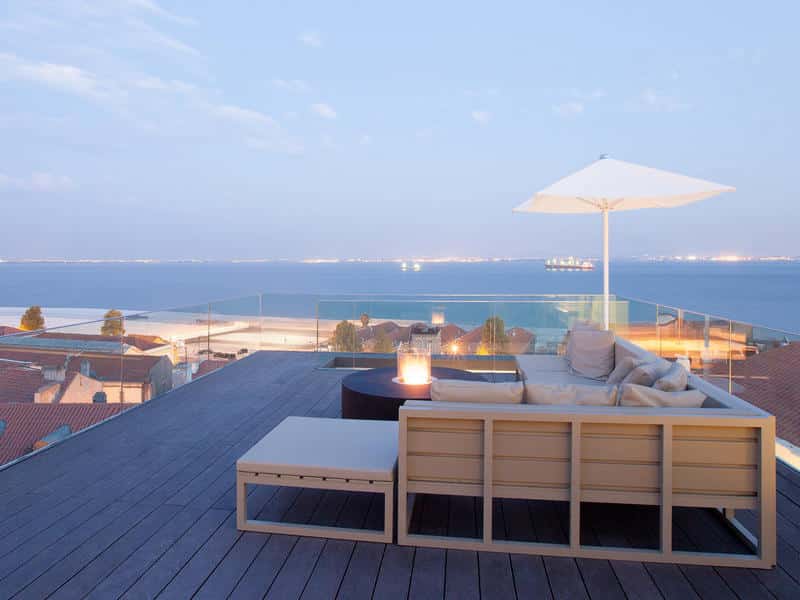
Memmo Alfama is already considered one of the Best Urban Boutique Hotels in Lisbon
Great location at the heart of the most typical district of Lisbon – Alfama – steps away from the Cathedral and the São Jorge Castle, amongst narrow streets, traditional shops and the famous Fado restaurants.
The Hotel, with 42 rooms, offers excellent views over the Lisbon’s rooftops and the Tagus River, a refreshing red outdoor pool and a spectacular terrace.
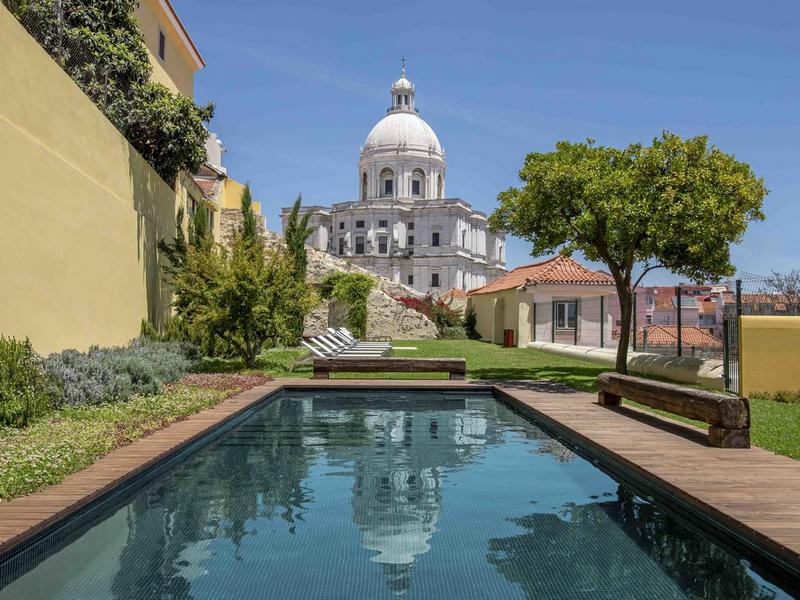
Spacious fully equipped apartments in a quiet road in Alfama, the charismatic old part of Lisbon. It has a refreshing pool surrounded by a beautiful garden with fantastic views
Everything needed is a short distance away.
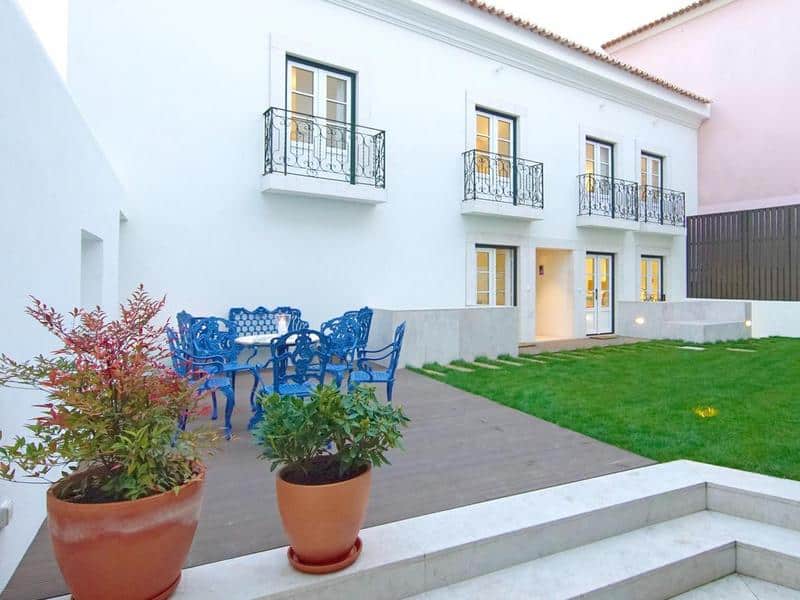
Near St. George’s Castle, on the tram 28 route. It offers fully equipped apartments and rooms.It has a garden area, great for relaxing after all the sightseeing.
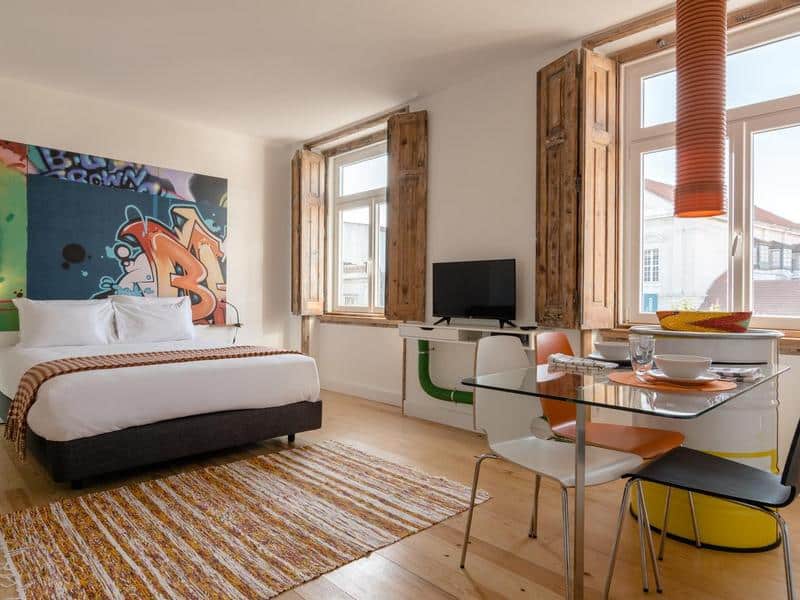
Chiado Arty Flats offers accommodation in a prime location within historic Lisbon. Apartments rooms or studios with small kitchens. Alternatively, guests can visit the many restaurants on offer within a 5-minute walk and try out the famed Portuguese cuisine.
Count with amiable staff to welcome you to Lisbon

Chiado 44 is a residential building , central, in the vibrante part of historic Lisbon. It is within walking distance of major attractions. Rooms have river views and balconies, others garden/patio views.
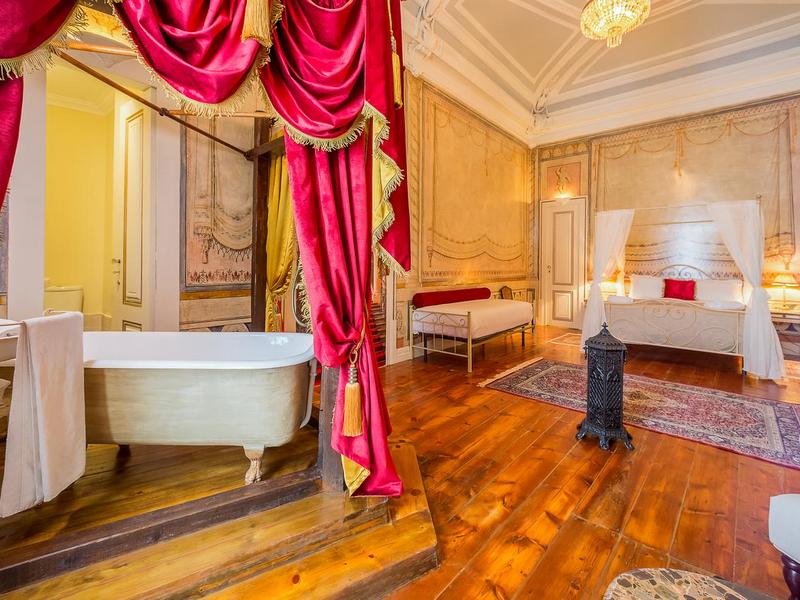
An old Palace in Lisbon’s historic Chiado. Quirky and out of the box that mixes modern comforts with vintage ambience
The Palace offers unique fairytale studios, rooms or suites
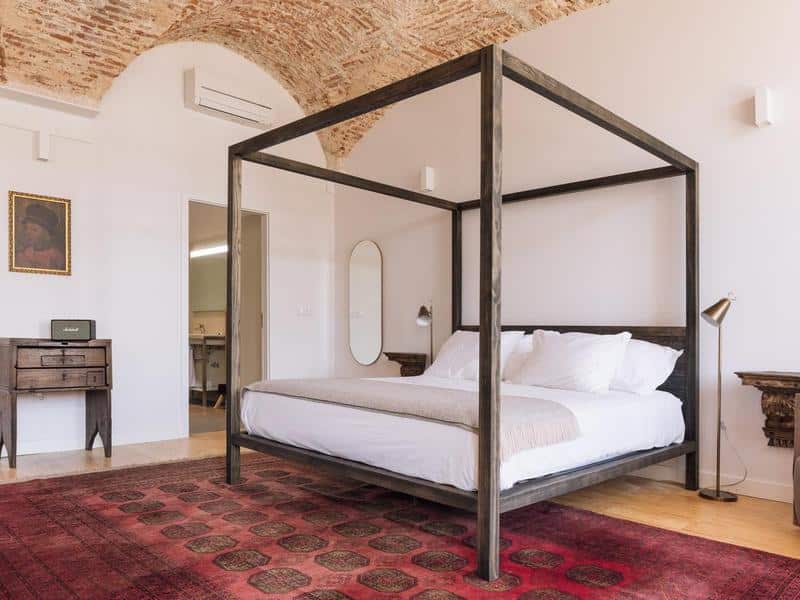
The Visionaire Apartments, in the iconic Figueira Square, features apartments, studios and suites
With the Rossio nearby, view of S Jorge Castle and the Tagus River a 10 min walk it is a great place to stay on your visit to Lisbon.
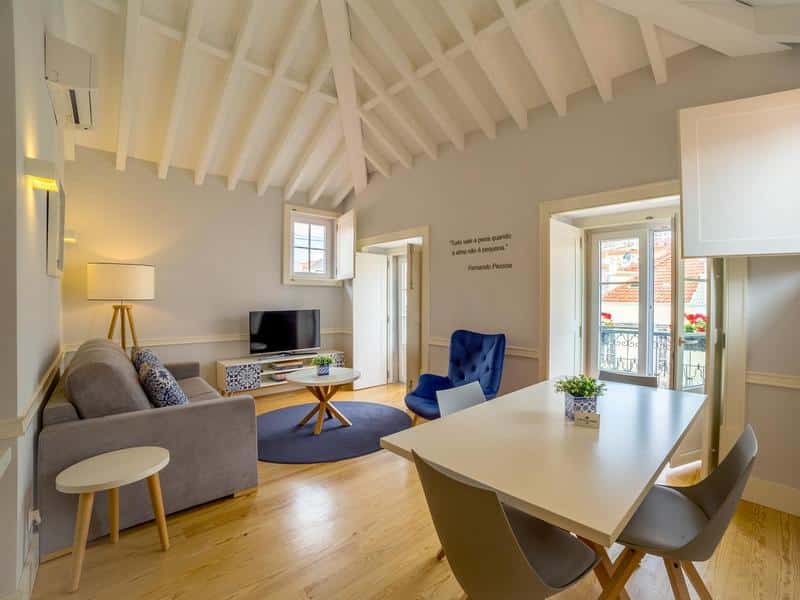
Villa Baixa is in a great location in the heart of Lisbon. Downtown close to a range of restaurants, cafés and pastry shops.
The studios and apartments are fully equipped and display an inviting blue and white decoration, inspired by the typical Portuguese tiles (azulejos)

Hello Lisbon Baixa Ouro Collection Serviced Apartments in Lisbon features modern accommodation with views of the city.
In Lisbon’s historic downtown area, making travelling around by foot, metro, tram or bus very easy.
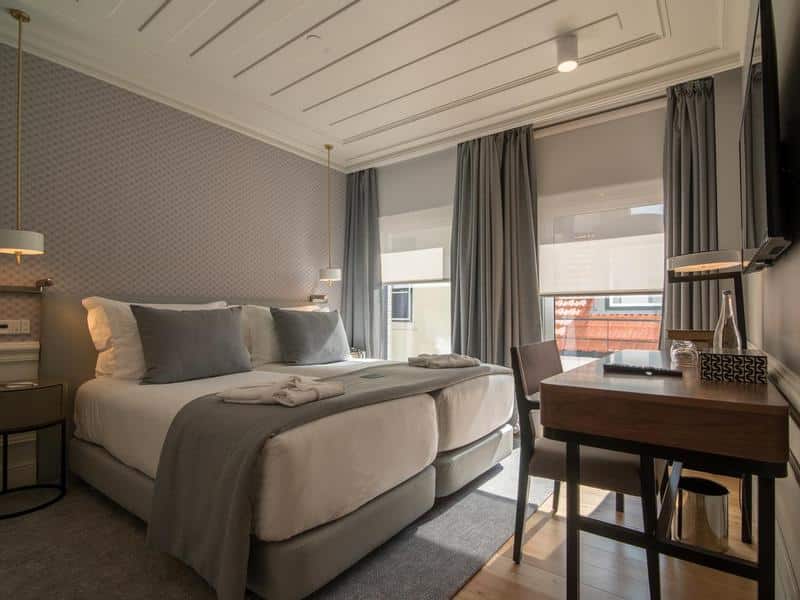
A 4 star Boutique Hotel in a prime location in Lisbon’s historic downtown area. Within short walking distance to Rossio and the Tagus River.
With a colorful and classic facade and a modern and comfortable interior. Rooms are spacious extremely comfortable with excellent service. Smart but not uptight

This Youthful hostel is considered one of the best in the world. It is located 250m from Rossio Train Station.
With friendly staff that help you get the most from your stay organising themed parties and activities. Great food, great atmosphere
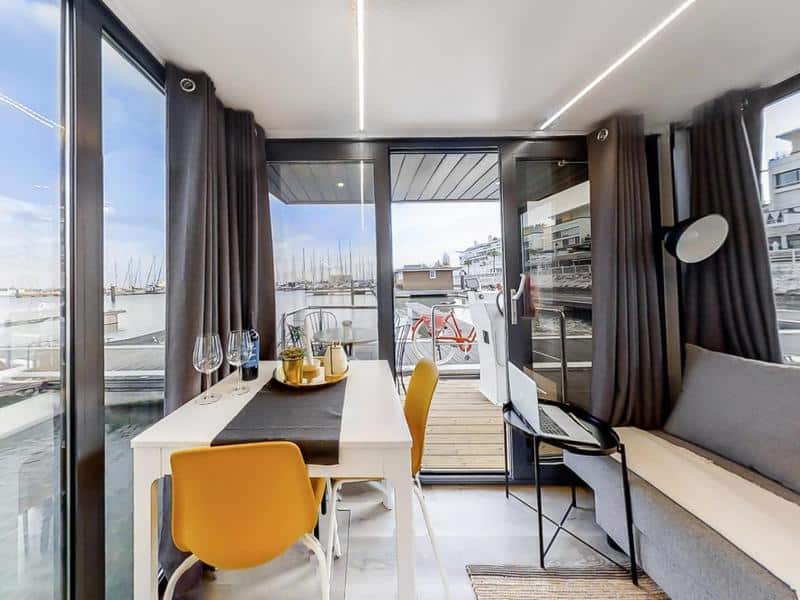
A different concept of accommodation aboard a houseboat. The comfort of a home, the thrill of being on the water. In Parque das Nações the reinvented part of Lisbon, modern and entertaining both for children and adults, surrounded by nature and the Tagus River
Things to do in Lisbon if visiting for the first time